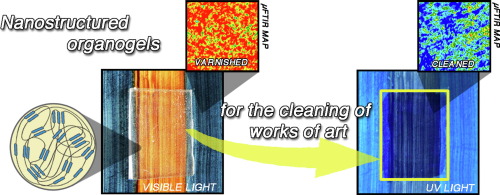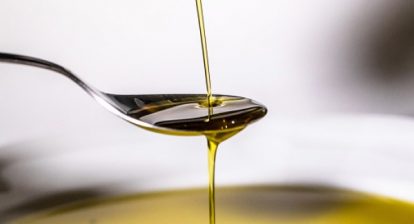Hypothesis
Organic solvents are often used for cleaning highly water-sensitive artifacts in modern/contemporary art. Due to the toxicity of most solvents, confining systems must be formulated to use these fluids in a safe and controlled way. We propose here castor oil (CO) organogels, obtained thorough cost-effective sustainable polyurethane crosslinking. This methodology is complementary to previously demonstrated hydrogels, when conservators opt for organic solvents over aqueous formulations.
Experiments
The gels were characterized via Small-angle Neutron Scattering and rheology before and after swelling in two organic solvents commonly adopted in cleaning paintings. The removal of a photo-aged acrylic-ketonic varnish was evaluated under visible and ultraviolet light, and with FTIR 2D imaging.
Findings
The new gels are dry systems that can be easily stored and loaded with solvents before use. Their nanoscale organization, viscoelasticity and cleaning action are controlled changing the amount of crosslinking, the polymeric backbone, and the loaded solvents. The fluids are confined in the nanosized polymeric mesh of the gels, which are highly retentive, granting controlled release over delicate paint layers, and transparent, allowing monitoring of the cleaning process. These features, along with their sustainable synthesis, candidate the CO organogels as feasible solutions for cultural heritage preservation, expanding the palette of advanced tools for conservators over traditional thickeners.






